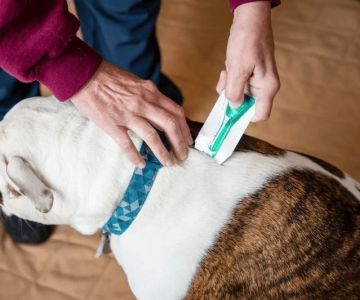Tips for Introducing a New Pet to Your Home
Bringing a new pet into your home is an exciting experience, but it can also be overwhelming for both you and your furry friend. Whether you're adopting a dog, a cat, or any other type of animal, the introduction process is crucial for ensuring a smooth transition and establishing a positive bond. In this article, we’ll walk you through some essential tips for introducing a new pet to your home, from preparing your space to managing any initial behavioral issues. With the right preparation and approach, you can ensure your new pet feels comfortable and settled in their new environment.
1. Preparing Your Home for Your New Pet
Before you bring your new pet home, it's important to create a welcoming and safe environment. Start by pet-proofing your home to make sure there are no potential hazards, such as toxic plants, choking hazards, or easily accessible cords. If you’re introducing a dog or a cat, designate a specific space in your home where they can retreat to feel secure. This might be a cozy corner or a crate for a dog or a quiet room for a cat.
1.1 Setting Up a Safe and Comfortable Space
Your new pet will need time to adjust to their new surroundings, so it’s essential to provide them with a dedicated space where they can feel safe and comfortable. For dogs, this may include a crate or a comfortable bed with their toys. Cats often prefer smaller, enclosed spaces where they can observe their surroundings from a safe distance. If you’re adopting a smaller animal like a rabbit or a guinea pig, make sure their habitat is properly set up with all the necessary supplies like bedding, food, and water.
1.2 Preparing Family Members
It’s essential to involve everyone in the household in the process of welcoming the new pet. Explain to children and other family members how to behave around the new pet, especially during the initial introductions. Make sure that everyone understands the importance of being calm and gentle, as this will help reduce stress for the pet and prevent any accidental injuries. Set clear expectations about the responsibilities involved in caring for the pet and assign tasks accordingly.
2. Initial Introduction to the Home
The first few days with your new pet will set the tone for their relationship with you and the rest of your household. It’s important to introduce them to their new environment gradually and give them time to adjust. While it’s tempting to immediately show off your new pet to friends and family, it’s best to give them some quiet time alone to get used to their new surroundings first.
2.1 Introduce One Room at a Time
When you first bring your new pet home, it’s helpful to introduce them to one room at a time. This is especially important for dogs and cats, as it can be overwhelming for them to explore an entire home all at once. Start by allowing them to explore a single room with minimal distractions. As they get comfortable, you can gradually allow them access to other areas of your home. This gradual approach will help them feel less anxious and more in control of their environment.
2.2 Meeting Family Members
If you have other pets at home, the initial introduction to your new pet may take time. It’s important to supervise interactions and take things slow. For example, when introducing a new dog to a resident dog, it’s often helpful to do so in a neutral space, like outside, to avoid territorial behavior. Allow both dogs to sniff each other from a distance before any direct interaction occurs. Similarly, when introducing a new cat to a resident cat, it’s best to keep them separated at first and allow for gradual introductions through a baby gate or a cracked door.
3. Managing Behavioral Issues During the Adjustment Period
It’s common for pets to exhibit certain behavioral issues during the adjustment period. Your new pet may be nervous, unsure, or even scared in their new environment. It’s important to stay patient and understanding while your pet settles in. Some pets may also exhibit behaviors like excessive barking, whining, or hiding. Here’s how you can manage these issues:
3.1 Give Them Time and Space
One of the most important things to remember when introducing a new pet to your home is that they need time to adjust. Be patient and allow your pet to explore their environment at their own pace. Avoid overwhelming them with too many new experiences or interactions, especially during the first few days. If your dog or cat seems anxious, give them space to retreat to their safe zone, such as their crate or a quiet room, until they’re ready to interact more.
3.2 Positive Reinforcement
Using positive reinforcement is a powerful tool to help your new pet feel more comfortable and secure in their new environment. Reward them with treats, praise, or playtime whenever they show calm behavior or approach new situations without fear. For example, if your dog calmly interacts with a family member or explores a new part of the house, reward them immediately with a treat or praise. This will help them associate new experiences with positive outcomes, making them more confident over time.
4. Establishing a Routine
Dogs, cats, and other pets thrive on routine. By establishing a consistent daily schedule for feeding, bathroom breaks, playtime, and rest, you can help your new pet feel more secure. A predictable routine will also allow them to adjust more easily to their new life in your home. For example, set regular feeding times and take your dog for walks at consistent intervals each day.
4.1 Feeding Schedule
For dogs and cats, having a consistent feeding schedule is important. It helps them feel more secure and provides a sense of structure. Ensure that you provide the right type of food and portion sizes according to your pet’s age, size, and health needs. For new pets, keeping feeding times the same every day will help them settle into their new routine more easily.
4.2 Playtime and Exercise
Regular playtime and exercise are vital for your pet’s well-being. Make sure you incorporate playtime and exercise into your daily routine to keep your pet active and engaged. If you’ve adopted a dog, daily walks and interactive play will help them burn off energy and build a stronger bond with you. For cats, provide toys and activities that stimulate their natural instincts, such as scratching posts and puzzle feeders.
5. Case Study: Successful Introduction of Max and Bella
When Sarah adopted Max, a 2-year-old Labrador Retriever, she was excited but nervous about how her resident cat, Bella, would react. Bella had always been the queen of the household, and Sarah wanted to ensure a smooth introduction. She decided to follow the gradual introduction strategy, starting with Max and Bella getting acquainted through a baby gate. After a few days of supervised introductions, they began to interact without the gate, and now Max and Bella are the best of friends. This careful, slow approach made all the difference in helping both pets adjust to the new dynamic.
6. Conclusion: Enjoying Your New Companion
Introducing a new pet to your home requires patience, preparation, and understanding. By following these tips, you can help ensure that the transition is as smooth as possible for both you and your new furry friend. Remember to take things slow, create a safe and welcoming space, and be patient with your pet during the adjustment period. With time and consistent care, your new pet will settle in and become an integral part of your family.
If you're looking for more tips or products to help with your new pet's adjustment, check out the latest pet care resources available online. Ensuring your pet's well-being and happiness is worth every effort!
OLD Keywords-31: SEO Title: How to Choose the Best Pet Food for Your Dog's Health: A Complete Guide SEO Keywords: pet food, dog health, choosing pet food, dog food, pet nutrition, healthy dog food, weight management dog food, dog allergies food SEO Description: Learn how to choose the best pet food for your dog’s health with our complete guide. Understand the nutritional needs, ingredients, and the right food options to keep your dog healthy.










